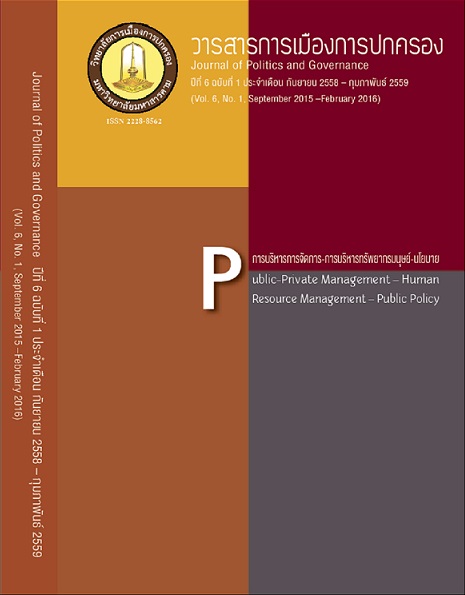Facilitating Recipient Ownership and Participation in Project Preparation and Appraisal under South-South Cooperation: NEDA Experiences in Lao PDR
Main Article Content
Abstract
There has been increasing interest in South-South Cooperation (SSC) in recent years of development effort. This trend claims the greater benefits of recipient countries engaging in SSC rather than engaging in NSC (North-South Cooperation) as SSC brings out the expertise and comparative advantage of southern development partner. This study focuses particularly on South-South bilateral cooperation and investigates into the condition within S-S cooperation that enables recipient’s participation and ownership which are important issues emphasized by the 8th Millennium Development Goal. In general, the level of recipient ownership is the extent to which recipient countries are treated as drivers of the car who set the course (Wolfensohn, 1999), while, ideally, donors help inject extra fuel in the tank if the car is heading into the right direction (The Financial Times, 21 Aug 2001).
This study provides an analysis and evaluation of the measures that NEDA (Neighbouring Countries Economic Development Cooperation Agency) as Thai Government’s donor agency facilitates recipient ownership and participation in south-south development project with particular focus in preparation and appraisal stage of project life cycle. Road improvement project between Thai and Lao PDR starting from Baan Tadthong to Ban Namsang (so called R11) with the total distance of 82 Km is chosen for analysis.
Based on interview with experts and government officials involving in the selected SSC project, the study will analyze factor that explains participation and recipient ownership that emerges during the preparation and appraisal stage of project life cycle. “Participative view” is employed to analyze the recipient participation and ownership on the project. Scholars who subscribe to the participative view believe that recipient ownership in aid relationship is high when the power of the beneficiaries or recipients is strong.
The study reveals the characteristics of aid delivery process in S-S cooperation and identify factor that allows strong recipient ownership and participation. This research is also important in that it helps explain why SSC is a preferred aid modality than North-South Cooperation (NSC).
Article Details
References
Jerve, A. M. & Hansen, A. S. (2008). Introduction: Conceptualising Ownership in Aid Relations. In Hansen, A. S. & Jerve, A. M. (2008). Aid relationships in Asia: exploring ownership in Japanese and Nordic aid. Palgrave Macmillan.
Ohno, I. &Ohno, K. (2008). Ownership of What?: Beyond National Poverty Strategies and Aid Harmonisation in the case of Vietnam. In Hansen, A. S. & Jerve, A. M. Aid relationships in Asia: exploring ownership in Japanese and Nordic aid. Palgrave Macmillan.
Shimomura, Y. (2008). Thailand: Legitimacy and Aid Recipient Ownership – the Case of The Export Promotion Strategy. In Hansen, A. S. & Jerve, A. M. Aid relationships in Asia: exploring ownership in Japanese and Nordic aid. Palgrave Macmillan.
Wajjwalku, S. & Tasarika, E. (2008). Thailand: What Makes Recipient Ownership?: A Comparative Study of Japanese and Danish Aid to Environmental Conservation. In Hansen, A. S. &Jerve, A. M. Aid relationships in Asia: exploring ownership in Japanese and Nordic aid. Palgrave Macmillan.
Wolfensohn, J. (1999). A proposal for a comprehensive development framework. (discussion draft), January.


